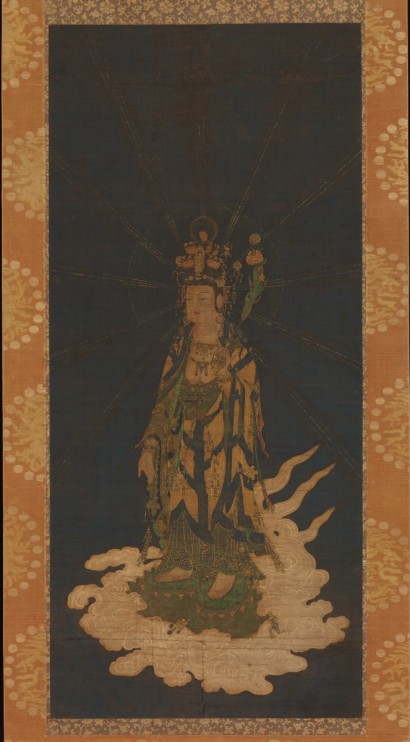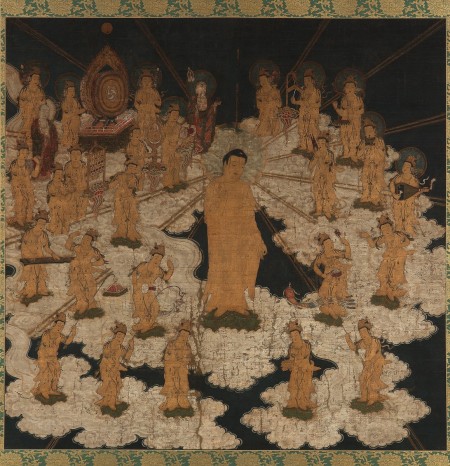Japan, Kamakura period, 14th century; hanging scroll, ink, color, gold, and cut gold on silk; image: 33 15/16 x 15 1/4 in., mount: 64 1/4 x 19 1/2 in., The Metropolitan Museum of Art, Purchase, Charles Wrightsman Gift, Joseph Pulitzer Bequest, Dodge, Pfeiffer and Rogers Funds, and funds from various donors, 1972, 1972.181, photo: www.metmuseum.org.
Welcoming Descent of the Buddha of Infinite Light and Twenty-five Bodhisattvas
Japan, Kamakura period, early 14th century; ink, gold, and color on silk; 62 5/16 x 63 11/16 in.; Freer Gallery of Art and Arthur M. Sackler Gallery, Gift of Charles Lang Freer, F1911.475.
The theme of the Welcoming Descent or Raigo, as seen in this Japanese painting, typically shows Buddha Amida and a host of bodhisattvas descending to the deathbed of the faithful to escort them personally to Sukhavati. Kannon is in the front row of five bodhisattvas, second from the right. The “Hymn to the Twenty-five Bodhisattvas” describes this iconography:
“Salutation and obeisance to the vows of the twenty-five bodhisattvas of Paradise Who promise that they will appear at the moment of death to the folk who receive and sincerely practice nembutsu
Proffering auspicious signs of music and unusual fragrances, the bodhisattvas come to greet the dying. How wonderful!
The lotus throne of the Bodhisattva Kannon bears all of us up to Paradise.”





